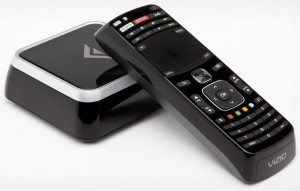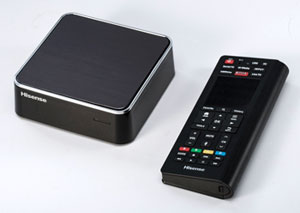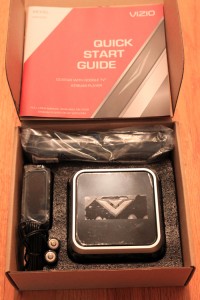If you had to pick one person that is the most outspoken advocate of Apple’s (APPL) still non-existent all-in-one Apple TV, it would have to be Piper Jaffray Wall Street analyst Gene Munster. For more than three years now, Gene’s been very vocal in predicting that Apple is getting ready to release an Apple TV set. The moment he says anything about the device, many people in the media make it into their lead story, even though to date, he’s yet to be right about any of his Apple TV predictions. While I don’t know Gene personally, and for all I know he’s one of the nicest guys in the world, I don’t understand why anyone listens to him when he’s been predicting the same thing, year after year, with no results to show for it.
When he predicted in June that Apple could sell 11M TV sets in the next 3-5 years, the media was all over it. Why? What credibility does he have? Anyone can predict something for many years and eventually might be right, but does that really matter? What info is Gene Munster putting out today that’s usable? I never went to college, I have no journalism courses or even writing classes under my belt and I don’t know what they teach journalists these days. But writers should be more focused on what is taking place today, not what might, could, or should happen 3-5 years from now because in nearly every case, what is predicted never comes true. I see more articles talking about Apple TV, a product that does not exist, as opposed to a device, like the Xbox 360, that actually has a real footprint, real user base and real revenue being generated.
In a previous note, Gene said that the size of the 2013 connected TV market is 110M units. I don’t know where that number comes from but even if we all agreed that’s the correct number to use, that 110M number refers to the global size of the market, not the U.S. market. And as we all know, if Apple were to start selling an all-in-one TV, it would not start off by offering it globally. So the 110M number simply isn’t a realistic size of the market that Apple would be entering. Adding some real data to my argument, Vizio, who is one of the best-selling TV manufactures in the market recently told me that they are forecasting to sell a total of 1.2M connected TVs this year.
Gene’s latest data about a product that does not exist comes to use last week where he surveyed 200 consumers in the Minneapolis St. Paul area and asked them what they would pay for an all-in-one Apple TV. Before you get too excited as to their answers, as the Fortune article points out, Gene says the data he’s collected from these 200 consumers is representative of a population of 300M consumers with 95% confidence. That’s absurd. The findings from a sample size of 200 consumers is supposed to represent the kind of data that would be collected if 300M consumers were interviewed? To put that in perspective, those 200 consumers equals 0.00006666666666666667% of the overall market. But the bigger point is that the data he collected shows people would not pay $1,500 for an Apple TV. When asked how much they’d be willing to pay, the average response from the consumers was $530, for a product that Gene is predicting Apple would sell for $1,500. So his own data collection doesn’t match the estimates and guidance he is giving out.
But according to Gene, if Apple was to capture only between 5-10% of his predicted 2013 connected TV market of 110 million units, it would be a big deal for Apple. On the low-end of that prediction, 5% of 110M is 5.5M units. So Gene is predicting that Apple would sell 4x the number of connected TVs that Vizio expects to sell this year, even though his own survey showed that on average people want to spend $530 for the device? None of this makes any sense. Any connected TV by Apple would easily be much more expensive than a Vizio model. Keep in mind as well, this is all taking place at a time when research firm NPD Display Search says total TV sales worldwide will only grow 2% this year and that global TV unit shipments rose only 0.1% in 2011. The price of an average 42″ smart TV, is between $500-$600 and we all know Apple’s TV wouldn’t be anything close to that price.
Last year, Gene predicted that a standalone all-in-one Apple TV would be available in 2011. In June of this year, he said it would come out in 2012, but then said we should expect it to actually ship somewhere around the first half of 2013. If an all-in-one Apple TV actually ships in 2013, that will be a full five years since Gene has been telling us all that an Apple TV was on the way. This of course is the same all-in-one Apple TV that Gene says must ship with Siri to be successful, a product he gave a D grade to only two months ago when he reviewed Siri’s functionality. In 2009 Gene predicted that Apple would sell 6.6M of the $99 Apple TV set-top boxes that year when in reality, three years later, Apple was barely selling even 3M units. In 2010, Gene said Apple would sell 20-25M iPads in 2011, and they sold 40M. He predicted Apple would sell 4.3M iPads in 2010, they sold 7.3M in one quarter. In 2007 Gene said that within two years, Apple would ship 45M phones a year. In reality, Apple shipped 25M. It’s no wonder that in 2010, on the Apple 2.0 blog, which tracks the best and worst Apple analysts, Gene was ranked 23rd out of a total of 32 analysts. But his poor track record doesn’t seem to stop the media who for some reason, continues to interview him and ask him to give his opinion on Apple products. As far as I am concerned, what Gene is doing isn’t what I would call predicting, he’s simply guessing. And so far, he’s pretty bad at it.
I get that some people are excited about an all-in-one Apple TV unit and if you are a money guy on Wall Street, like Gene is, you’re even more excited about it as you spend most of your time trying to figure out how many units of a new product a company can sell and how you can pump a stock. But we have enough real data in the market today to know what smart TVs cost, how many units are actually being sold, what the growth of the market is and what consumers are willing to pay for these devices. Even with that info available for everyone to see, some of these predictions that Wall Street guys like Gene puts out, are simply irrational and fuel expectations on Wall Street that simply can’t be met. And when wrong expectations get set, we know the outcome from that is never good – for the industry, or investors.
 If you were interested in buying Vizio’s new $99 Co-Star streaming media box and missed out on the pre-order, the good news is you don’t have to wait much longer for them to be back in stock. While the Vizio.com website currently says ‘Temporarily sold out”, Vizio let me know that they will open their website back up for orders on September 9th. And if that batch gets sold out, the company will have more in stock, available for ordering on September 18th. So check out my hands-on review of the device, put the date on your calendar and get ready to place your order for this nice little box. And if you want to try and win one for free, you can entering my drawing, where I am giving one away.
If you were interested in buying Vizio’s new $99 Co-Star streaming media box and missed out on the pre-order, the good news is you don’t have to wait much longer for them to be back in stock. While the Vizio.com website currently says ‘Temporarily sold out”, Vizio let me know that they will open their website back up for orders on September 9th. And if that batch gets sold out, the company will have more in stock, available for ordering on September 18th. So check out my hands-on review of the device, put the date on your calendar and get ready to place your order for this nice little box. And if you want to try and win one for free, you can entering my drawing, where I am giving one away.

